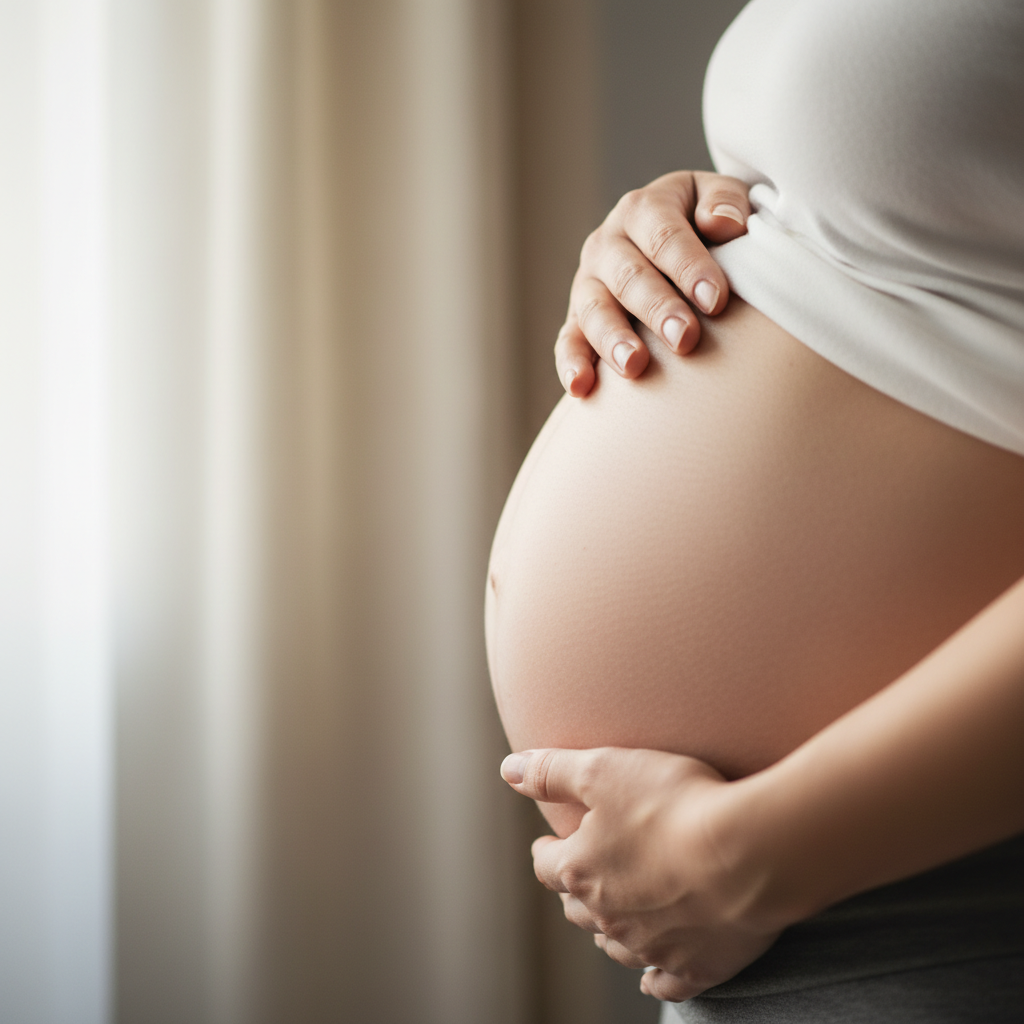
Baby’s Sleep Patterns Before Birth
Your baby’s life in the womb is filled with more sleep than you might imagine, with fetuses spending 90-95% of their time sleeping by late pregnancy. This remarkable period of rest serves a crucial purpose, as sleep is vital for your baby’s brain development and the formation of neural connections that will support them throughout life.
Key Highlights
Here’s what you should know about your baby’s sleep patterns before birth:
- Sleep-wake cycles begin to emerge around the second trimester when brain cells form for sleep regulation
- By 32 weeks, babies experience four distinct behavioral states: quiet sleep, active sleep, quiet awake, and active awake
- REM sleep, possibly associated with dreaming, appears around 28-29 weeks and increases in the final weeks
- Your sleep position and quality can influence your baby’s sleep states
- Maternal circadian rhythms help set your baby’s internal clock even before birth
Understanding Changes: When Sleep Begins

During the earliest weeks of pregnancy, your baby exists in an almost constant sleep state with little distinction between sleeping and waking. As you enter the 2nd trimester, your baby’s brain begins developing the structures needed for sleep regulation. Around 24-28 weeks, sleep patterns become more organized, with cycles that last approximately 40-60 minutes compared to the 90-minute cycles adults experience.
According to the Journal of Perinatal Medicine, before 11 weeks, fetuses don’t demonstrate clear sleep-wake cycles because their brain structures are still forming. By mid-pregnancy, the foundation for sleep regulation starts taking shape, with the brain stem and thalamus developing to support basic sleep functions. This period marks an important transition as your baby begins to establish rhythms that will continue after birth.
Understanding Changes: Types of Sleep
By 32 weeks, researchers have identified four distinct behavioral states that your baby cycles through: quiet sleep (similar to non-REM), active sleep (similar to REM), quiet awake, and active awake. During quiet sleep, your baby remains relatively still with regular breathing and heart rate, while active sleep involves more movement, irregular breathing, and rapid eye movements. These different states can be observed through ultrasound and by monitoring fetal heart rate patterns.
Active sleep dominates your baby’s experience, accounting for approximately 80-90% of sleep time in early development, gradually decreasing to about 50% by full term. According to research from the University of California, this high proportion of active sleep is essential for brain development, as it stimulates neural connections and helps form important pathways. The balance between sleep states continues to shift closer to birth, preparing your baby for the sleep patterns they’ll experience in the outside world.
Your Body & Baby: REM Sleep and Dreaming

One of the most fascinating aspects of fetal sleep is the presence of REM (Rapid Eye Movement) sleep, which first appears around 28-29 weeks of pregnancy. During this state, your baby’s eyes move rapidly beneath their eyelids, much like yours do during dreaming sleep. This REM sleep increases significantly during the final weeks before birth, suggesting important developmental processes are occurring during this time.
While scientists can’t know for certain if babies dream before birth, the presence of REM sleep raises intriguing possibilities. During the 2ns trimester, your baby begins experiencing sensations like sound, movement, and changes in light that could potentially provide material for basic dream states. Studies from the Sleep Research Society show that these early REM states support sensory development and help prepare neural pathways that will be essential after birth.
Your Body & Baby: Sleep and Development
Sleep plays a critical role in your baby’s development, particularly for the brain, which develops at what researchers call a “supersonic rate” during fetal sleep. During sleep periods, your baby’s brain is forming billions of neurons and creating connections between them. This neural growth is especially important during the second trimester, when brain development accelerates dramatically.
The Fetal and Neonatal Physiology Journal reports that sleep states promote protein synthesis and cellular division, which are fundamental to healthy growth. Sleep also contributes to memory formation, even before birth, as your baby begins to recognize familiar sounds and patterns. When disruptions occur to maternal or fetal sleep, there can be subtle effects on development, highlighting why good sleep is important for both mother and baby throughout pregnancy.
Healthy Living Tips: Supporting Fetal Sleep

Your sleep position and routines can influence your baby’s sleep patterns. Research from the American Journal of Obstetrics and Gynecology suggests that sleeping on your left side improves blood flow to the placenta, which can enhance fetal sleep quality. After the 2nd month pregnancy, as your uterus grows, side sleeping becomes increasingly important for optimal circulation.
Establishing regular sleep routines benefits both you and your baby, as your circadian rhythms help set your baby’s internal clock through hormonal signals. The quality of your sleep directly affects your baby—when you sleep well, your baby receives optimal oxygen and nutrients. If you’re experiencing pregnancy headaches second trimester, speak with your healthcare provider about safe remedies that won’t disturb your sleep or your baby’s development.
Healthy Living Tips: Understanding Baby’s Movements
Those kicks, hiccups, and quiet times you experience provide valuable information about your baby’s sleep states. Generally, periods of reduced movement often indicate that your baby is in quiet sleep, while more active periods suggest REM sleep or wakefulness. Fetal hiccups, those rhythmic movements you might feel, are normal and actually represent your baby practicing breathing movements that will be needed after birth.
As you progress through pregnancy, you’ll likely notice patterns in your baby’s activity levels. Many expectant mothers report that their babies are most active in the evening when they’re resting, which reflects the inverse relationship between maternal and fetal alertness. According to maternal-fetal medicine specialists, becoming familiar with your baby’s typical patterns helps you connect with them before birth and provides reassurance about their wellbeing.
Your Baby’s First Healthy Habit
Sleep is your baby’s first healthy habit, establishing patterns that will continue to evolve after birth. These early sleep cycles are more than just rest—they represent a critical phase of development that prepares your baby for life outside the womb. By understanding and supporting your baby’s sleep needs during pregnancy, you’re already contributing positively to their health and development.
As you move through the remaining weeks of your pregnancy, take comfort in knowing that these natural sleep patterns are helping your baby grow and develop in the best possible way. The mystery of your baby’s sleep life before birth is a beautiful reminder of the complex and wonderful journey of development happening inside you each day.
Sources
Journal of Perinatal Medicine – Fetal Sleep States and Development
Fetal and Neonatal Physiology Journal – Sleep States and Brain Development
American Journal of Obstetrics and Gynecology – Maternal Position and Fetal Sleep
Sleep Research Society – REM Sleep in Fetal Development
Journal of Sleep Research – Fetal Sleep Patterns and Development
